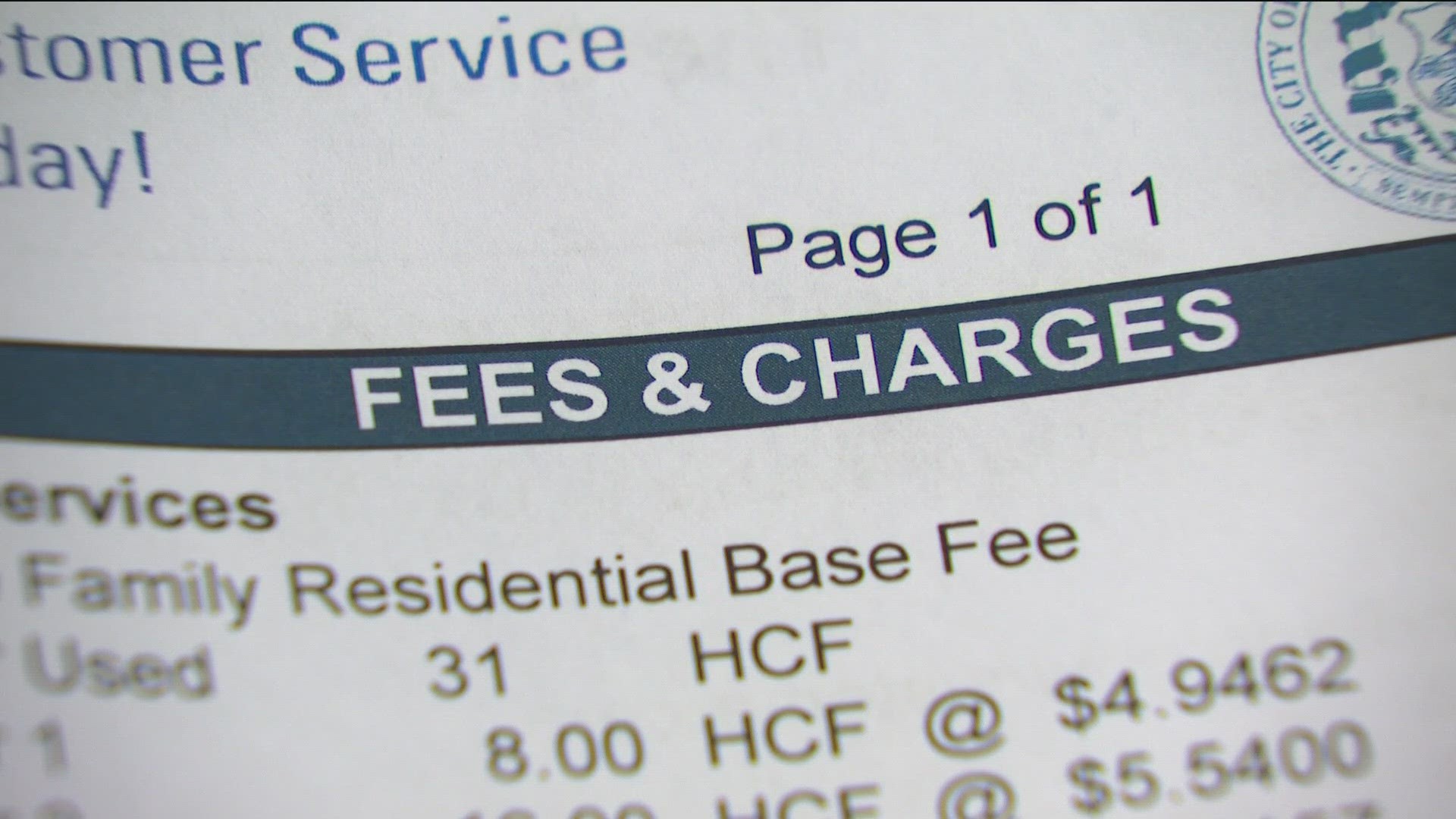SAN DIEGO — Approximately 28,000 water customers in the city of San Diego are not getting their bi-monthly water bills, according to a city spokesperson.
The city's public utilities department is holding on to those bills as they investigate the properties for potential leaks, misbilling, broken meters, or other issues.
However, staffing shortages and lacking technology prevent the city from notifying homeowners that they could have leaks on their property or that their bills are not available.
Oftentimes, San Diego's water customers first learn of the issue when a bill finally does arrive, in some cases a process that could take over a year, and the city is asking for thousands, in some cases tens of thousands of dollars in water charges.
CBS 8 is working for San Diego water customers to prod the city to resolve the billing issues.
As we work to get you answers, CBS 8 has some tips for customers who have not received their water bills, how to check for leaks, and who to call in case there is an issue with your water meter.
Checking for leaks
Of the 280,000 water meters in the city of San Diego, more than 90% are analog water meters, meaning you can look at your meter to track daily, weekly, or monthly usage. And while this will not tell you any billing information, it can reveal whether or not you are using water at any given moment.
Step 1 - Finding your water meter
While this seems like a relatively easy task, finding your water meter for residents living in older homes in older communities could be burdensome.
Typically, meters are located on the sidewalk in front of your home or property. One way to locate it is to look in a straight line from your outdoor spigot.
The water meter sits in a concrete box with a concrete lid on top that usually is labeled, 'water.'
Once your meter box is located, use a large screwdriver or tool to pry open the small opening


When the lid is opened, the face of the water meter should be visible.
*Note: Some meters can be buried in dirt or debris or damaged and unreadable. If that is the case, contact the San Diego Water Department here to have crews come and read your meter or call 619-515-3500.


The meter is similar to the odometer in your car. On the meter to the left, the reading is taken from the figures shown above the words CUBIC FEET. The meter reads 81710 which is the total number of cubic feet of water recorded since the meter was installed. Because water is measured in units of 100 cubic feet, the meter reader discards the last two numbers (the ones with the black background). So, this reading would actually be 817.*
*NOTE: The new meters may have four numbers with black background.
If you have your water bill and it shows a meter reading of 803 the difference between the current read (817) and the previous read (803) would be the amount of water you used since the date the meter was read. You would have used 14 Hundred Cubic Feet (HCF). 14 HCF equals 14 x 748.5 gallons or 10,479 gallons.
Find out how much water you use in one day: If you read your meter at 10 am in the morning and it reads: 56314. The following day at 10 am you read the meter again and it reads: 56321. The difference between the two reads is 7 Cubic Feet (CF). You have used 52.5 gallons in 24 hours. You can do the same thing to determine how much water you use to fill the pool, water the lawn or wash a load of clothes.
Step 2 - Checking for leaks
Now on to how to check for leaks.
Locate the small indicator, in some cases, depending on the type of meter, it will be a blue triangle or an arrow as seen in the images below:




Once the meter and the arrow or triangle have been located go inside your home and make sure to turn off any appliances such as dishwasher, washing machine, ice maker, or sprinklers.
Turning off the water inside this should result in no water flowing from the meter into your home.
To check this, go back to the meter. If the small blue or red triangle or arrow is moving, this means you likely have a leak somewhere inside your home or in your irrigation lines. The faster the arrow moves, the bigger the leak.
To make sure there is not a slow leak somewhere, mark the spot where the big hand on the meter is located. Return in 15 minutes or so and come back to make sure it has not moved.
If a leak is found, go back inside and see if a toilet is running or a faucet is dripping. If that is not the case and the meter is still running, contact a plumber to track the source of the leak.
Contacting the water department
Now, what to do in case you are one of the approximately 28,000 water customers whose bill is now under review at the city's Water Department:
San Diego water customers should contact the city of San Diego if they haven't received a bill in the mail or for the thousands of customers who signed up for auto-pay and have the charges taken out of their bank accounts.
A spokesperson for the city of San Diego tells CBS 8 that there are a number of reasons for missing bills. Those reasons include potential leaks, reduced water usage, misbilling, and broken meters, among other causes.
"Bills are held when a water meter read is significantly outside the typical range based on historic usage so that Public Utilities staff can manually investigate the account to determine the cause of the abnormal read," said the city spokesperson.
For the vast majority of cases, homeowners are not informed that their bill is under investigation. The main reason for the lack of notice, says the spokesperson, is severe staffing shortages.
"Due to staffing challenges, the Public Utilities Department is, unfortunately, unable to investigate each account immediately. We have also had staffing challenges in meter readings in 2023, resulting in more water usage estimates. We have made progress filling more of these positions recently, so a greater percentage of water meters are being read timely, meaning customers will be billed timely."
So what should you do if your bill is under investigation? The spokesperson says to contact the city:
You can do so by going to the city's public utilities website here or by calling 619-515-3500 to speak to a customer representative.
However, as CBS 8 learned, wait times are long, and the water department's customer service department is understaffed.
In an attempt to see just how long of a wait water customers are in store for, CBS 8 called the water department's customer service number and waited for nearly 45 minutes until finally getting connected with someone.
The spokesperson for the water department said customers do need to keep that in mind and be patient.
"We are always willing to work with our customers. We understand phone and email response times are long but encourage customers to reach out if they haven’t received a bill. Any customer who did not timely receive their water utility bill and had a leak during that billing period, can contact the Public Utilities Department at 619-515-3500 and request an adjustment. General information about leak adjustments can be found at: www.sandiego.gov/public-utilities/customer-service/billing/adjustments"
If you are currently experiencing a billing issue or had one in the past please reach out to CBS 8 and let us get to work for you at workingforyou@cbs8.com.
At CBS 8, we are always Working for You and our community. This is a station promise that we will go the extra mile to solve a problem our audience can’t solve themselves. We want to hear your ideas on how we can cover and help our community. If you have a story idea, please email us at workingforyou@cbs8.com.

